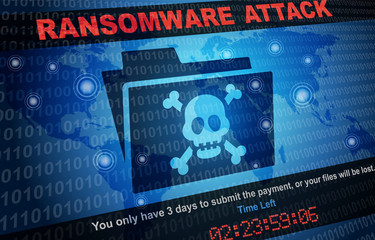Are you falling for common cybersecurity myths that could put your digital life at risk? This comprehensive guide exposes the top 10 misconceptions that could leave you vulnerable to cyberattacks. Learn the truth about password strength, antivirus software, public Wi-Fi, and more. Protect yourself and your data by debunking these myths today.

Table of Contents
Top 10 myths :
1) “Macs Don’t Get infected.”
Ans:- While Macs have traditionally been less targeted by malware than Windows PCs, the notion that they are completely immune is a misconception. Malware developers are increasingly targeting macOS, and recent years have seen a rise in Mac-specific threats.
2) “Antivirus Software Alone is Enough.”
Ans:- Antivirus software is an important tool, it’s not enough to protect your computer. You should also keep your software updated, use strong passwords, be careful of phishing attacks, and back up your important files. By combining these measures with antivirus software, you can significantly improve your cybersecurity posture.
3) “Strong passwords are enough to keep me safe.”
Ans:-While strong, unique passwords are a crucial part of cybersecurity, they’re not the only line of defense. Cybercriminals employ various tactics, such as phishing attacks and social engineering, to bypass strong passwords. It’s essential to adopt a layered security approach, including using multi-factor authentication, being cautious of suspicious emails and links, and regularly updating software. By combining these measures with strong passwords, you can significantly enhance your online security.
4) “Hackers Only Target Large Organizations.”
Ans:- While large organizations often attract significant cyberattacks due to their valuable data and infrastructure, it’s a misconception that hackers only target big companies. In reality, cybercriminals target individuals and small businesses as well. Hackers can use various techniques like phishing, malware, and ransomware to steal personal information, financial data, and disrupt operations. It’s crucial for individuals and small businesses to be aware of these threats and implement strong cybersecurity measures to protect themselves.
5) “Public Wi-Fi is Safe with https Websites.”
Ans:- Using HTTPS websites can add a layer of security when using public Wi-Fi, it’s important to remember that it’s not a foolproof solution. Public Wi-Fi networks are often unsecured, making them vulnerable to various cyber threats. Even when using HTTPS, your data can still be intercepted and analyzed by malicious actors. Therefore, it’s crucial to exercise caution when using public Wi-Fi, avoid sensitive activities like online banking or shopping, and consider using a VPN to encrypt your traffic.
6) “Cybersecurity is a Technology Problem.”
Ans:- Technology plays a significant role in cybersecurity, it’s not solely a technological problem. Human factors, such as user behavior and organizational culture, are equally important. Cyberattacks often exploit human vulnerabilities, like clicking on malicious links or falling for social engineering tactics. Therefore, a comprehensive cybersecurity strategy must address both technological and human aspects. By educating users, implementing strong security policies, and staying updated on the latest threats, organizations can significantly reduce their risk of cyberattacks.
7) “Phishing Emails Are Easy to Spot.”
Ans:- Phishing emails often contain obvious red flags, cybercriminals are becoming increasingly sophisticated in their tactics. They use social engineering techniques to craft convincing messages that can trick even the most cautious users. It’s important to be vigilant and look for subtle signs of a phishing attempt, such as unexpected sender addresses, urgent language, or suspicious links. By staying informed and practicing good cyber hygiene, you can protect yourself from falling victim to these deceptive tactics.
8) “Software Updates Are Optional.”
Ans:- Software updates may sometimes seem inconvenient, they are crucial for maintaining the security and performance of your devices. These updates often include security patches that address vulnerabilities that could be exploited by hackers. By ignoring updates, you’re leaving your system exposed to potential threats like malware, viruses, and data breaches. It’s essential to keep your software up-to-date to ensure your digital safety.
9) “Cybersecurity Is Too Expensive for Small Businesses.”
Ans:- It’s true that robust cybersecurity solutions can be costly, especially for small businesses, it’s important to remember that the cost of a cyberattack can be far greater. A data breach can lead to financial losses, reputational damage, and legal liabilities. Small businesses can implement effective cybersecurity measures without breaking the bank. This includes using strong, unique passwords, keeping software up-to-date, educating employees about cybersecurity risks, and using basic security tools like firewalls and antivirus software. By taking these steps, small businesses can significantly reduce their risk of cyberattacks and protect their valuable assets.
10) “Backups Protect Against Ransomware.”
Ans:- Regular backups can help mitigate the impact of a ransomware attack by allowing you to restore your files, they are not a complete solution. Ransomware can encrypt backup files as well, especially if they are stored locally. To protect your backups, consider storing them offline or using cloud-based backup solutions with strong security measures. Additionally, staying updated with the latest security patches and avoiding suspicious emails and downloads can further reduce the risk of a ransomware attack.




11 Comments